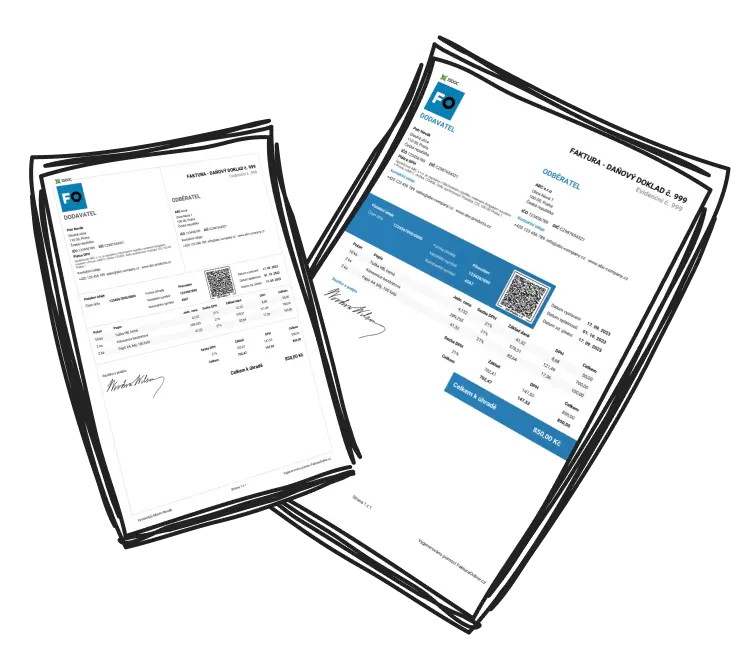Hourly invoices are essential documents that freelancers in the United Kingdom use to charge clients based on time worked. These invoices itemise tasks, hours, and corresponding fees, calculated at a prearranged hourly rate. They play a key role in validating a freelancer's contribution and maintaining clear communication with clients. Take a graphic designer who spends 20 hours on a task at £50/hour; an hourly invoice systematically shows how the total is reached. Such invoices are key in sectors needing adaptability and time-specific deliverables.

Tip
Deploying hourly invoices fortifies trust and enhances professional interaction and accountability between freelancers and clients.
Steps to Create an Hourly Invoice
Formulating an hourly invoice might sound complex, but it’s straightforward if you adhere to these steps:
Select an Invoice Template: Decide to craft one using tools like Excel or Word, or leverage invoicing software such as QuickBooks or FreshBooks for a more streamlined process.
Enter Your Information: Incorporate your name, business name (if relevant), logo, and contact info prominently at the top.
Add Client Details: Make sure to clearly include the client’s full name, business name, and contact information.
Document Labelling: Label it as “Invoice” and provide a unique invoice number, issue date, and payment deadline.
Detail Hours Worked: Log each task, detailing dates and hours spent, and apply your hourly rate to compute the totals.
Define Payment Terms: Specify payment instructions including bank details and conditions for any late payments.
Accurate Review: Ensure every detail is correct by meticulously proofreading the document.

Example Image
Design a basic layout for an hourly invoice with segments for branding, client info, detailed hours, and payment terms clearly structured.
Key Components of an Hourly Invoice
Make sure your hourly invoice is professionally comprehensive with this checklist:
Your Business Identity: Incorporate your company name and logo for a professional touch.
Client Information: Include the client’s name, address, and contact details.
Invoice Information: Clearly note the invoice date, unique ID, and due date for payment.
Thorough Time Logs: Specify tasks performed, including dates, and exact hours for transparency.
Rates and Totals: State your hourly rate, subtotal for tasks, and the total to be paid.
Payment Options: Describe payment methods including bank account numbers or other details like PayPal links.
Supplementary Details: Mention any additional fees, taxes, and currency if dealing internationally.

Tip
Clearly outline payment terms like net-30 days or penalties for delayed payments to prevent disputes.
The Importance of Accurate Invoices
Precision in invoices ensures swift payments and underpins the trust between freelancers and clients. Detailed invoices offer clarity, making it obvious where funds are allocated, thereby decreasing disputes and fostering robust business relations. Inaccurate or incomplete details can jeopardise a freelancer's reputation or cash flow.

Getting invoice details wrong may result in legal challenges, accounting complications, and payment setbacks, impacting both cash flow and professional standing.
Ensuring Invoice Completeness
Adopt these measures to compose a thorough hourly invoice:
Consistent Work Tracking: Utilise tools like Toggl to meticulously log your hours.
Templates and Software: Opt for invoicing software such as Harvest, or utilise ready-made templates for consistent, professional presentation.
Detailed Task Breakdown: Provide comprehensive descriptions like “Created website mockups – 5 hours at £30/hour.”
Verify Calculations: Double-check all arithmetic to prevent overcharging or missing information.
Set Expectations Early: Outline payment terms and conditions at the project's start, including currency and deadlines.
Include Notes: Add supplementary notes, including gratitude statements or information about discounts for early payments.
Seek Feedback: Regularly inquire if your clients find your invoices meet their needs and make amendments if necessary.
Employing time-tracking applications and an organised invoicing approach saves time while enhancing accuracy and professionalism for freelancers.


